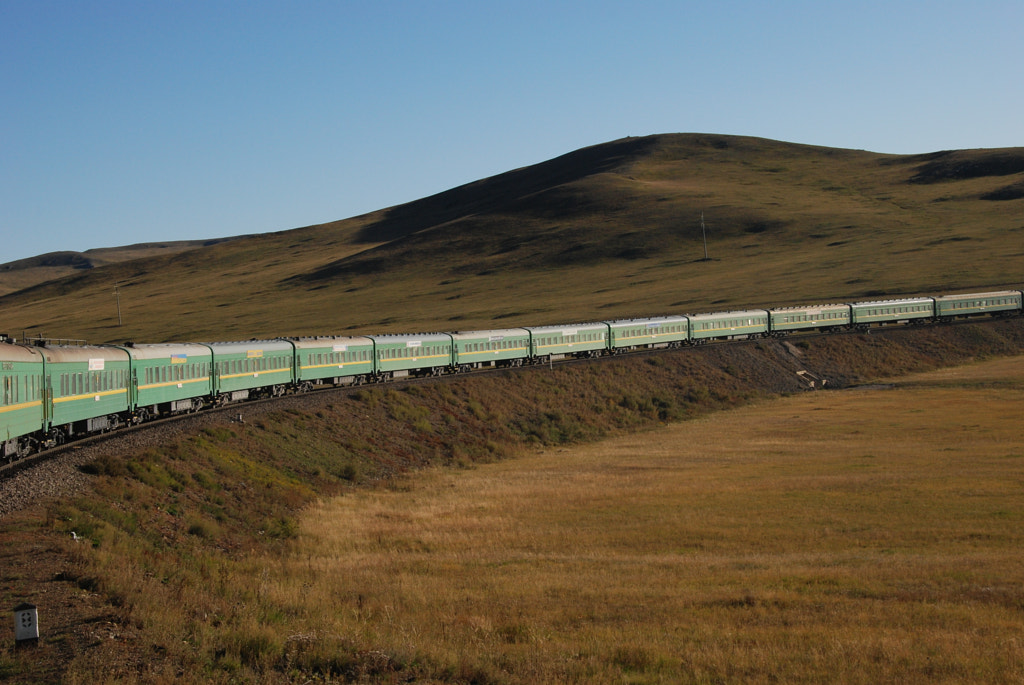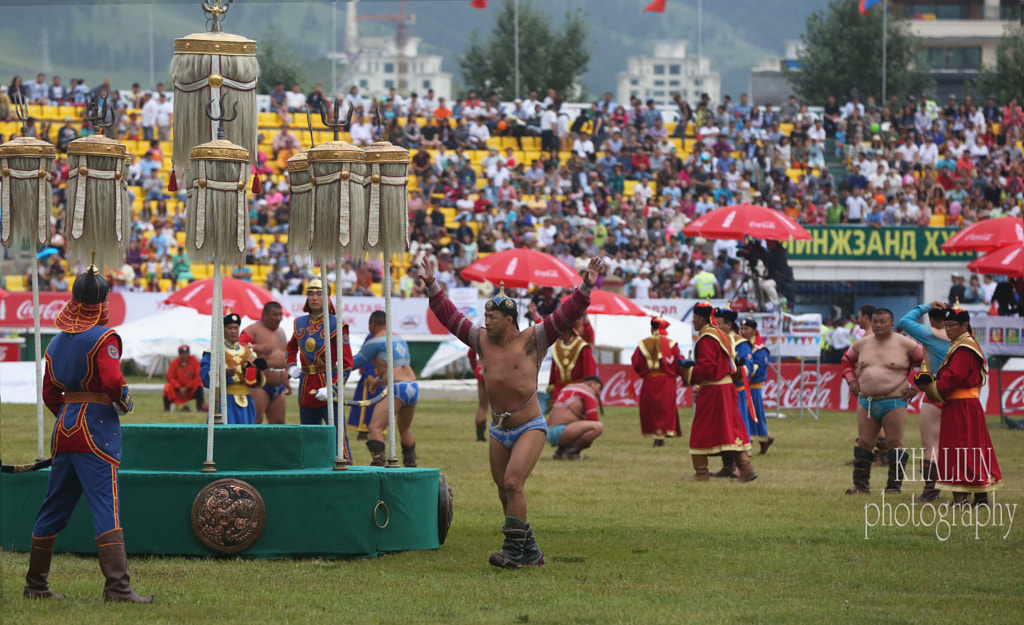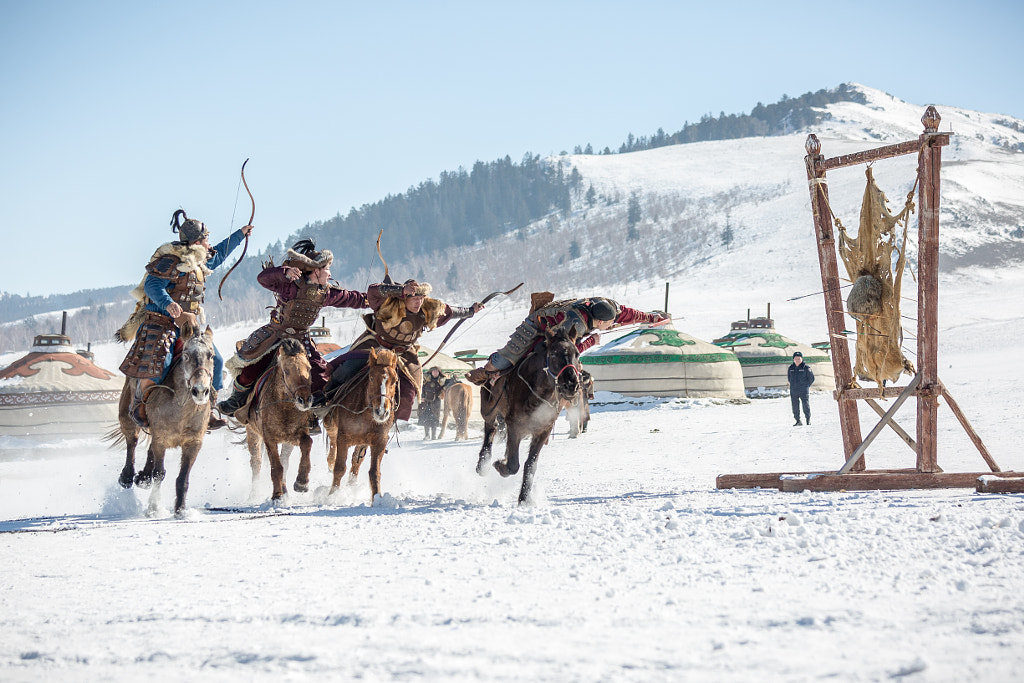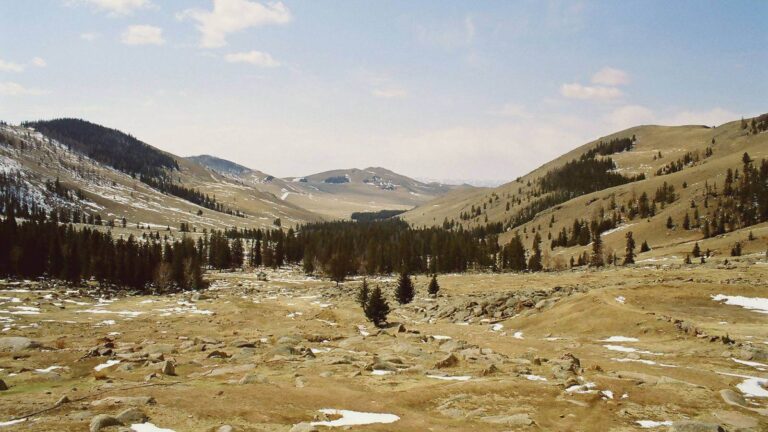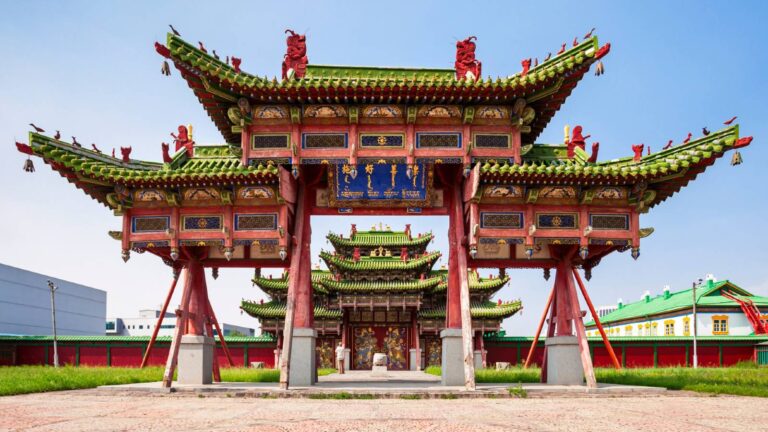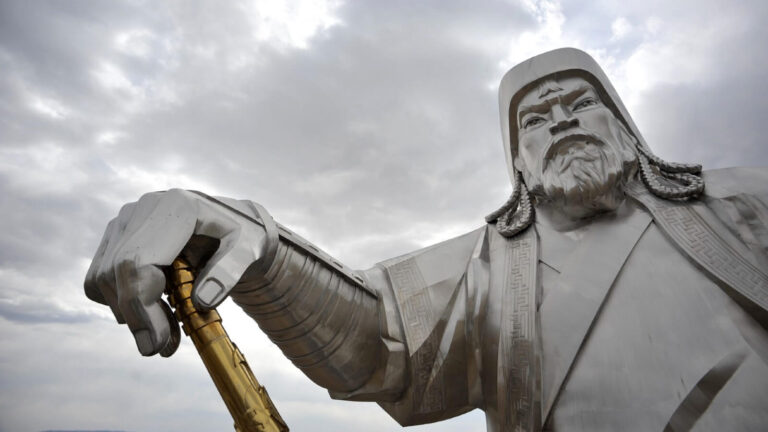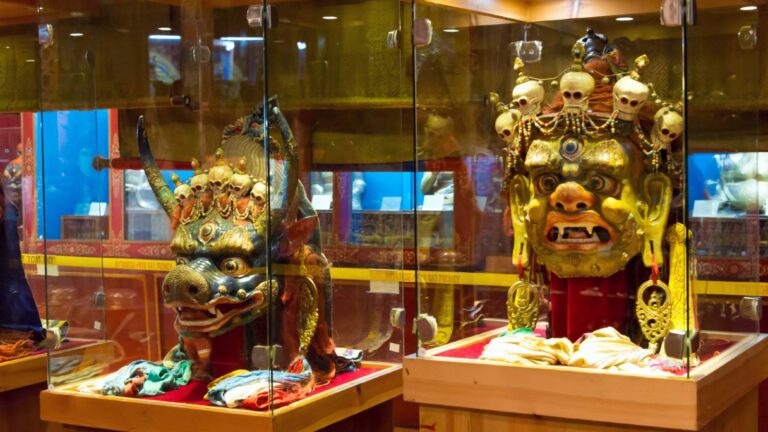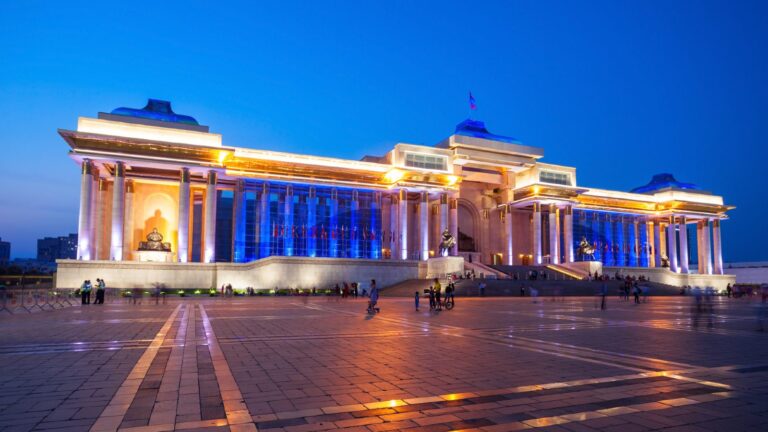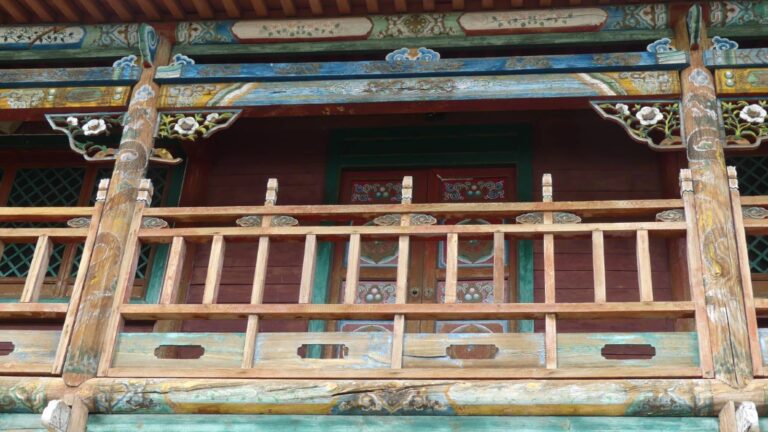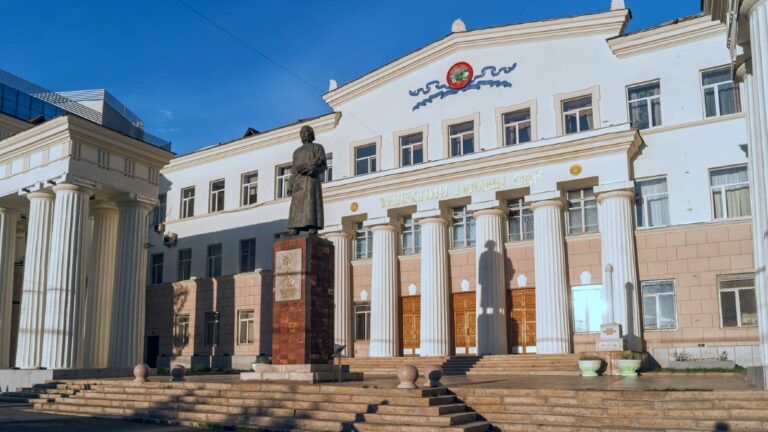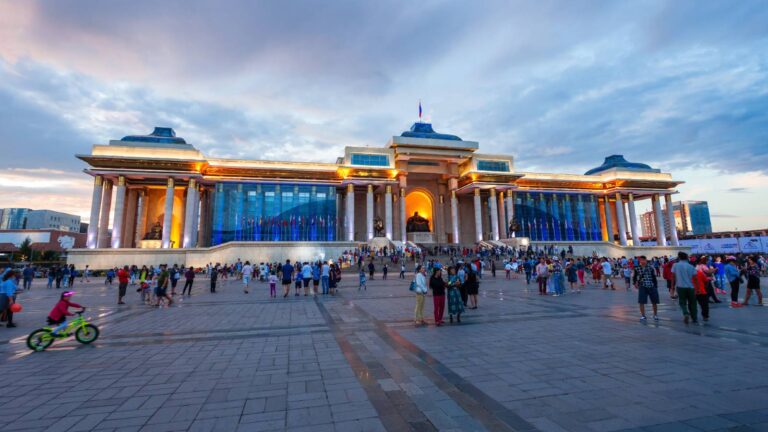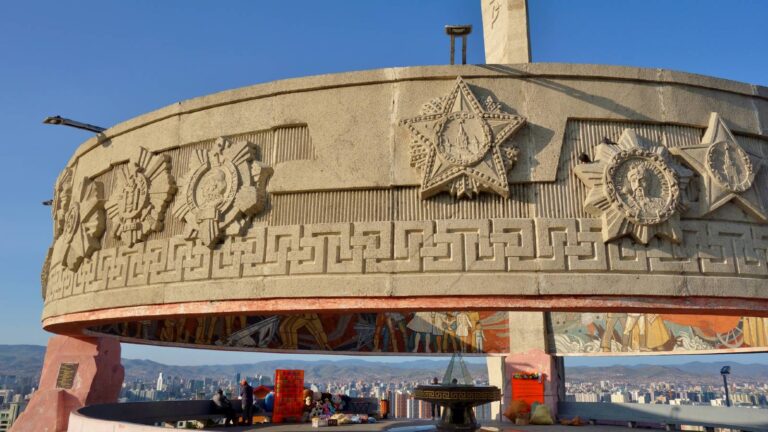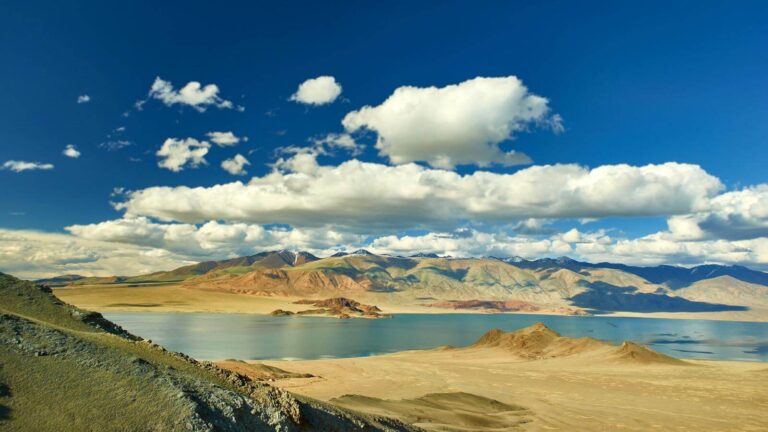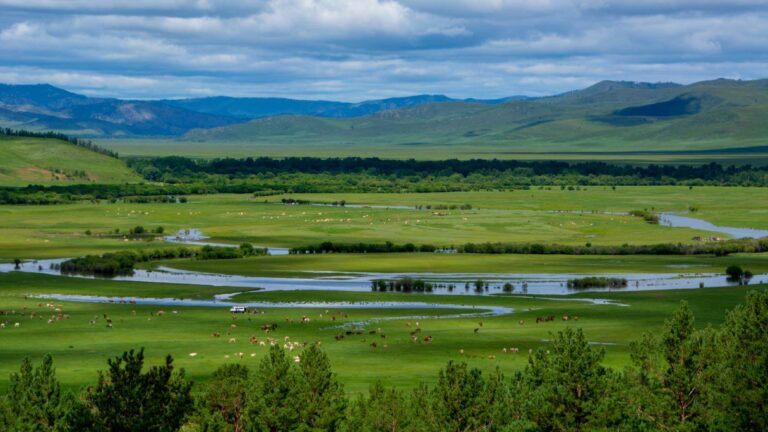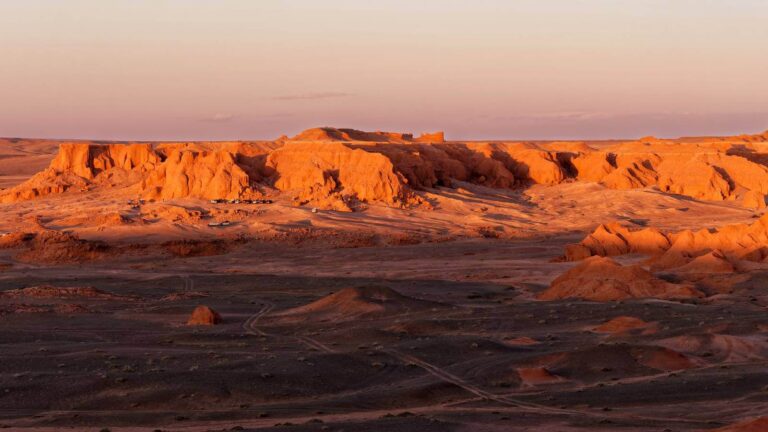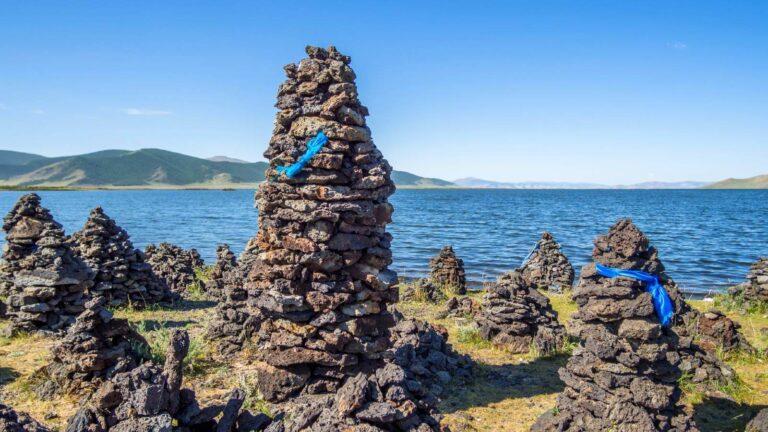Ulaanbaatar is linked by international flights, the Trans-Mongolian train journey and bus travel from its surrounding border countries of Russia, China and Kazakhstan. Given it’s the capital it’s also the hub for local travel, whether by a public transport network of long-distance buses and minivans, domestic flights or train journeys.
Mongolia’s capital city is a vibrant hub of culture that offers a diverse range of cultural experiences.
The National Museum of Mongolia showcases the country’s rich history, displaying artefacts and exhibits that highlight its nomadic heritage, ancient civilisations and the rise of the Mongol Empire.
Sükhbaatar Square is the cultural heart of the city and is where Mongolia declared independence from China in 1921. Today it’s a spot for locals to gather, hang out, celebrate or protest. Among its important cultural institutions are parliament house, the Palace of Culture, the Mongolian National Modern Art Gallery and the enormous Chinggis Khaan Statue.
In a country famous for its paleontology discoveries, the Central Museum of Mongolian Dinosaurs is the best place to see some wonderful dinosaur fossils, including the 4m-tall Tarbosaurus bataar.
The exquisite Choijin Lama Temple Museum is another notable cultural attraction, with its serene Buddhist temples to wander and explore. The Buddhist monastery of Gandan Khiid is likewise a wonderful spot to get a feel for UB’s spiritual side.
Ulaanbaatar’s origins can be traced back to its founding as the initial capital of the Mongolian Empire in 1639. Initially known as Örgöö, it functioned as a temporary capital situated at the Da Khuree monastery in Arkhangai aimag. As a nomadic settlement, it was easily movable, consisting of felt tents that accommodated the mobile lifestyle. Relocations occurred along the Orkhon, Selenge, and Tuul rivers. In 1778, the city settled at its current location, earning the name City of Felt and later Ikh Khuree (Great Camp). It fell under the leadership of the Bogd Gegeen, the highest spiritual figure of the time. Uliastai served as the administrative capital of Outer Mongolia under the Manchus.
In 1911, Mongolia asserted independence from China, and Khuree became the capital of Outer Mongolia, renamed Niislel Khuree (Capital Camp). Chinese and Russian invasions transpired in 1918 and 1921, respectively. Finally, in 1924, the city adopted its official name, Ulaanbaatar, meaning ‘Red Hero,’ in commemoration of the communist revolution and the establishment of an ‘independent’ Mongolia. Ulaanbaatar assumed the role of the nation’s political, economic, and cultural hub, but very much under control of the Soviet Union.
The collapse of the USSR in 1990 marked a significant milestone in the country’s history and had a profound impact on the city’s culture. The post Soviet era saw Ulaanbaatar experience a resurgence of Mongolian identity and cultural expression as the city embraced its traditional roots while also embracing global influences, creating a unique blend of old and new.
Ulaanbaatar is a cool, modern city with cosmopolitan restaurants, lively nightlife and indie band scene to go with modern art and café culture.
For traditional culture don’t miss UB’s biggest festival, Naadam. Held in July, this week of festivities showcases unique events including wrestling, horse racing and archery.
In February the city hosts the Ulaanbaatar Winter Festival, showcasing unique events ranging from ice archery and dog sledding to shooting competitions.
Ulaanbaatar is a city ringed by mountainous terrain and countryside but otherwise it’s a heavily industrialised modern city plagued by some of the world’s worst pollution. In line with much of the country, the city endures oppressive winters and summers, leaving spring and autumn as the best times to visit.
As Mongolia’s capital, Ulaanbaatar serves as the country’s economic centre, driving various sectors and contributing significantly to its GDP. It’s home to numerous banks, financial institutions and mining and manufacturing companies. Tourism is another big industry, attracting both domestic and international visitors to explore its unique cultural heritage.

